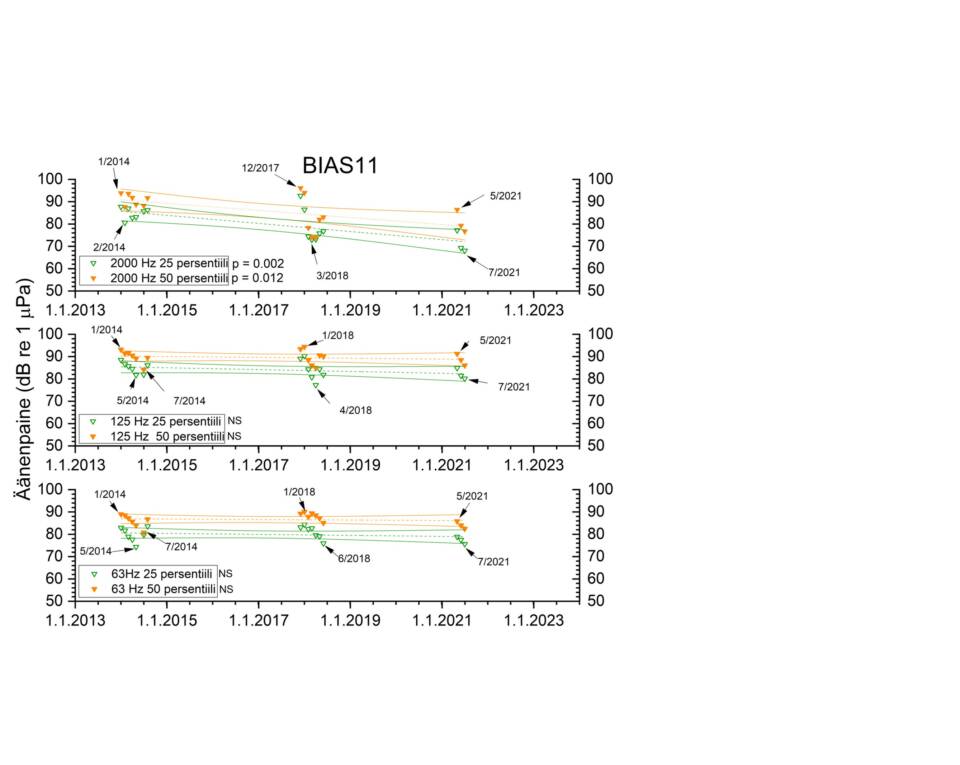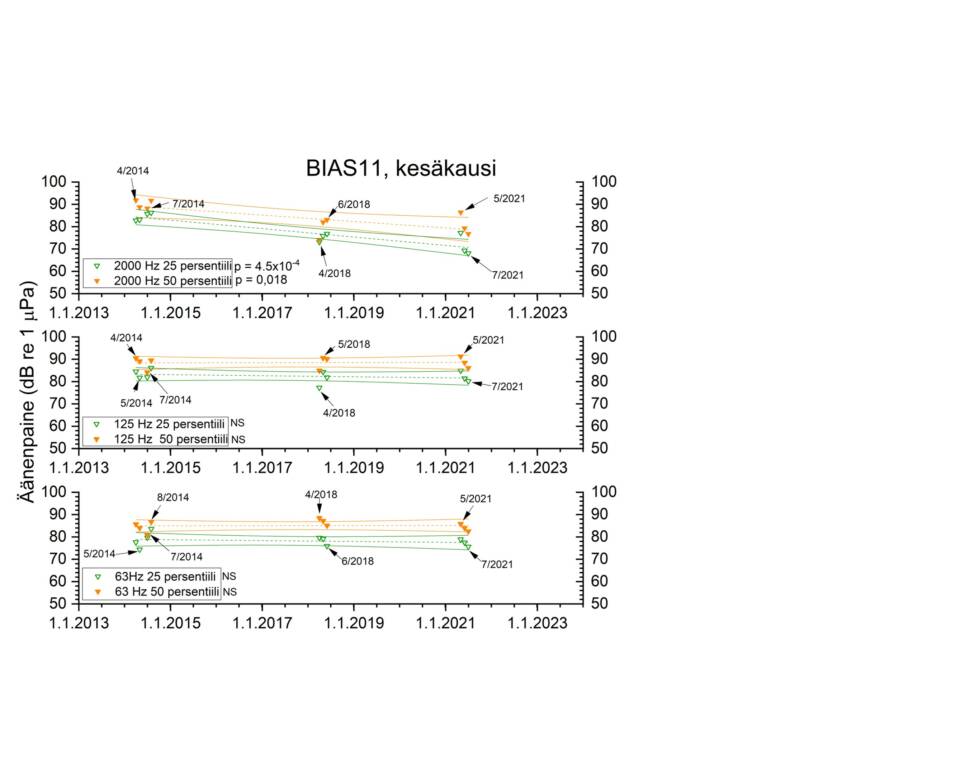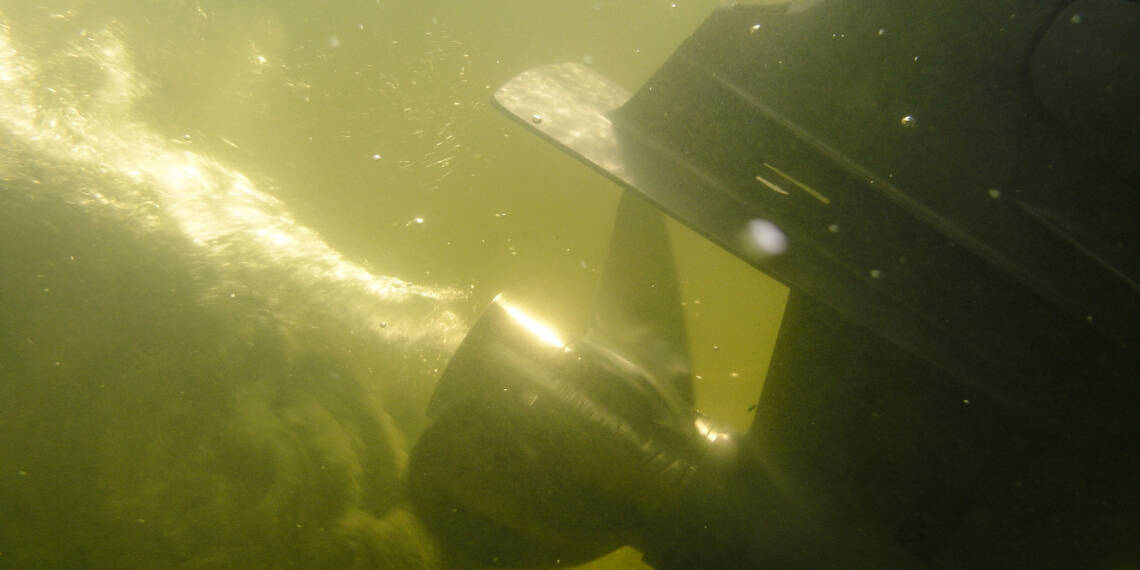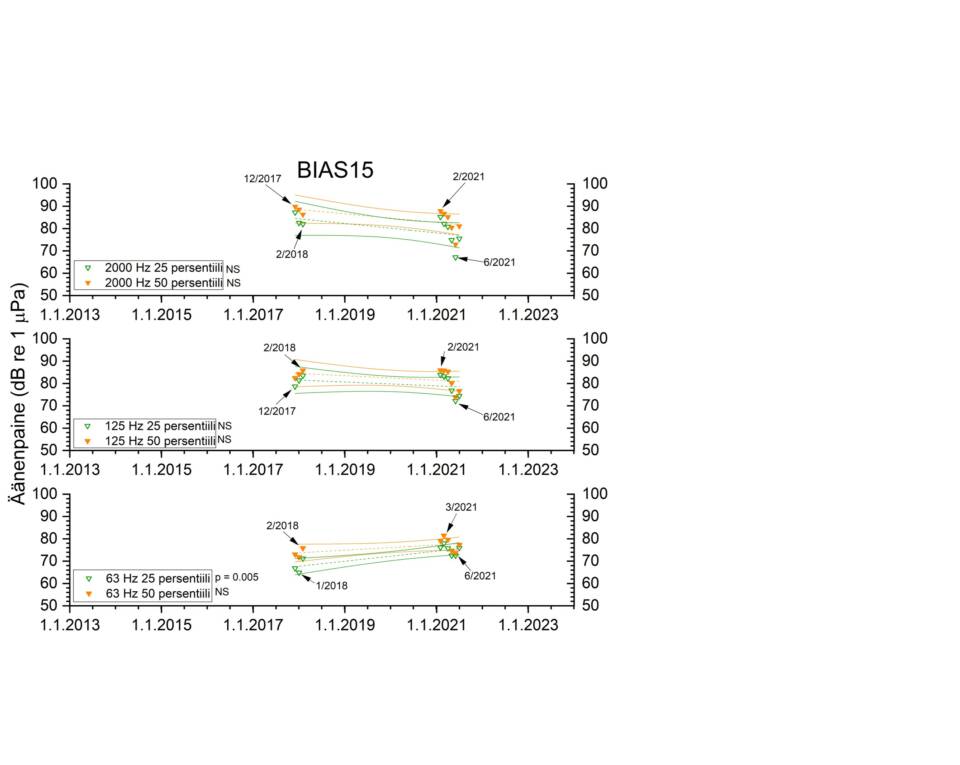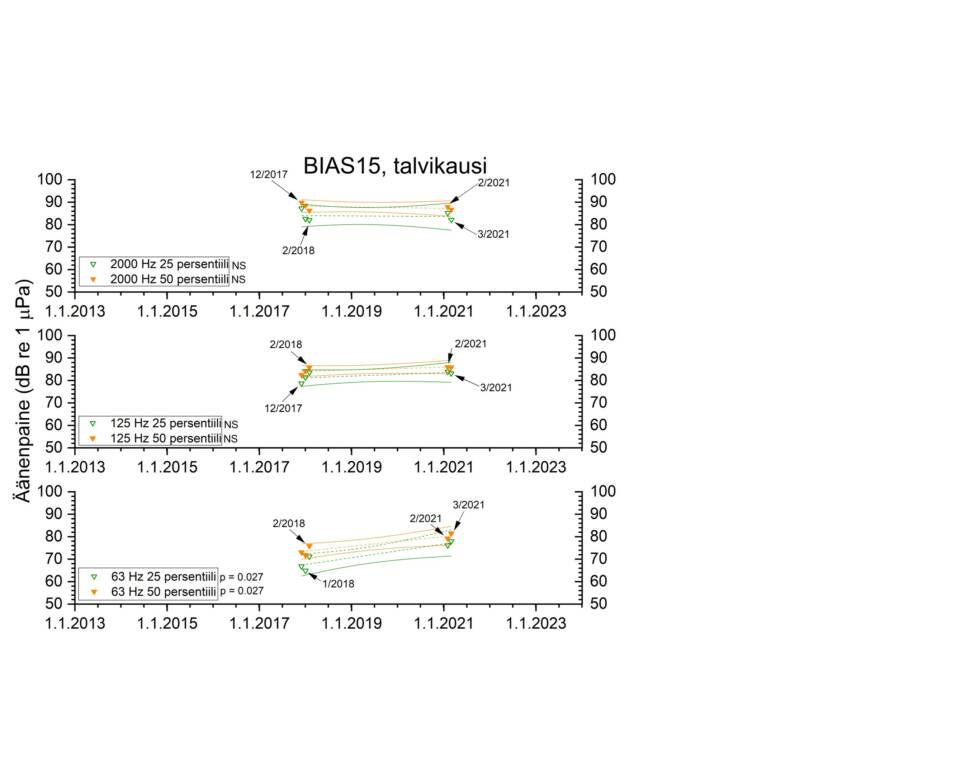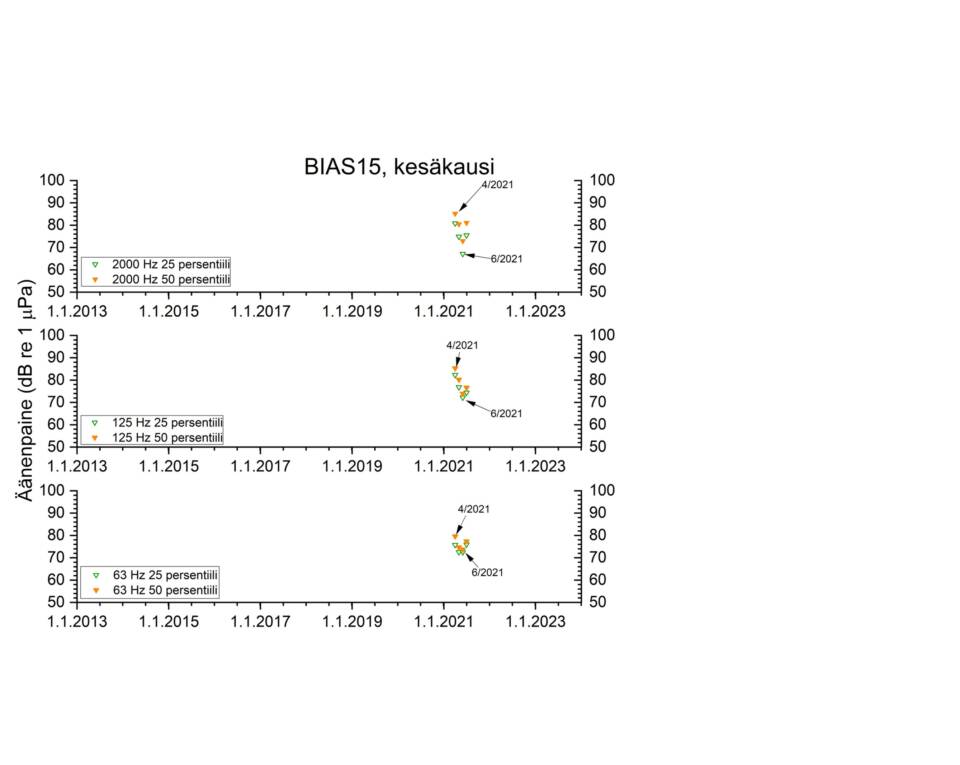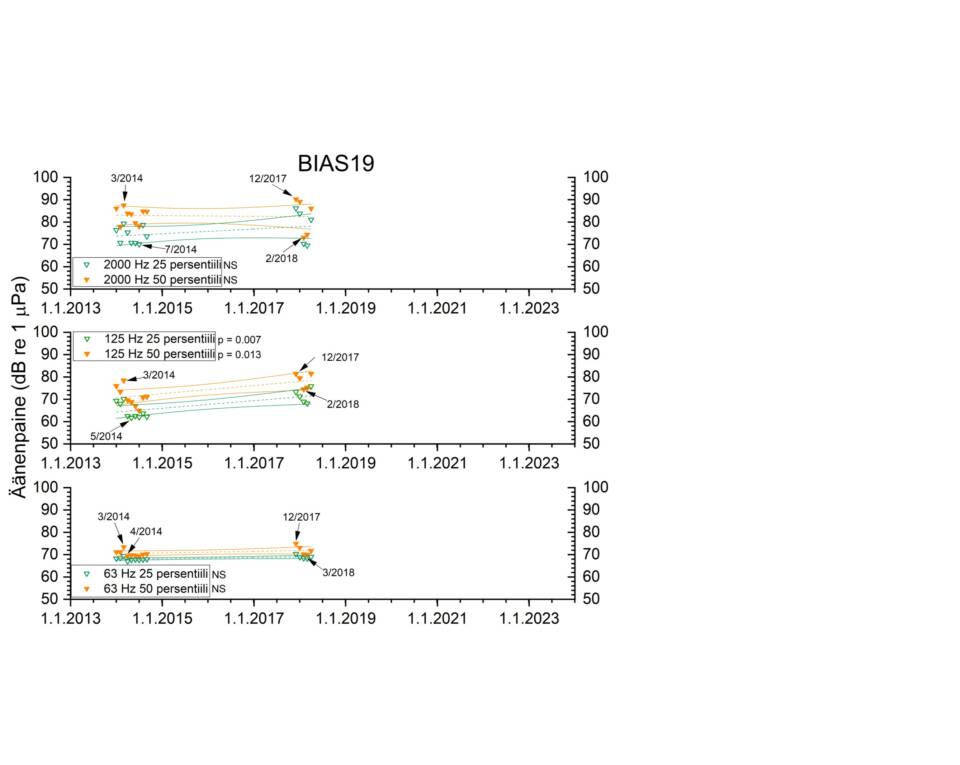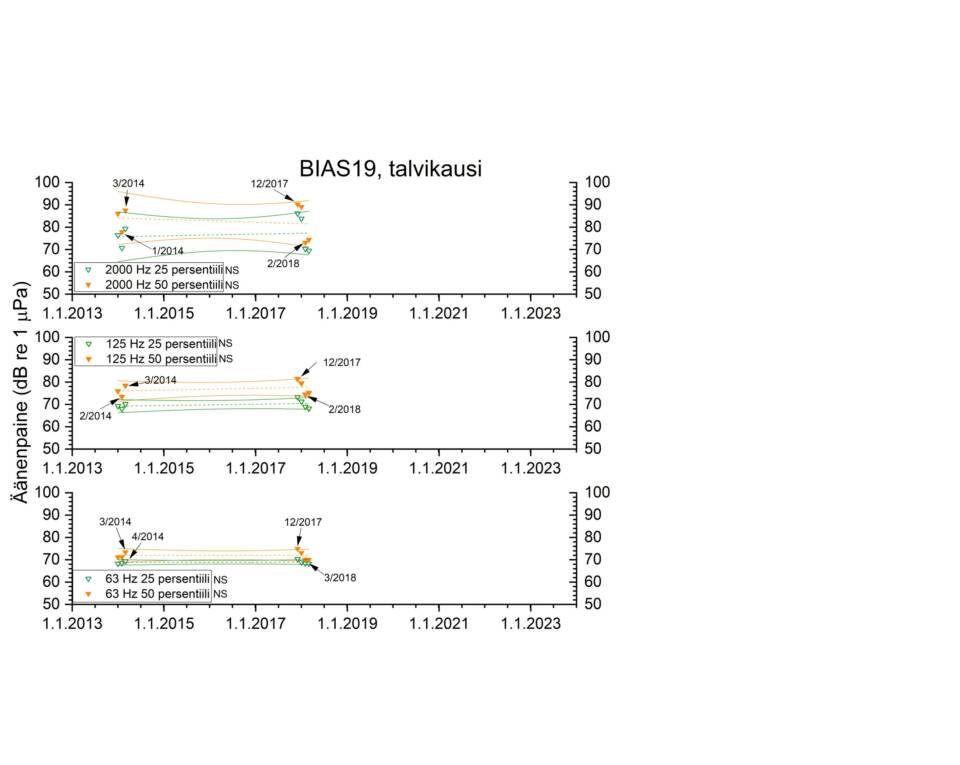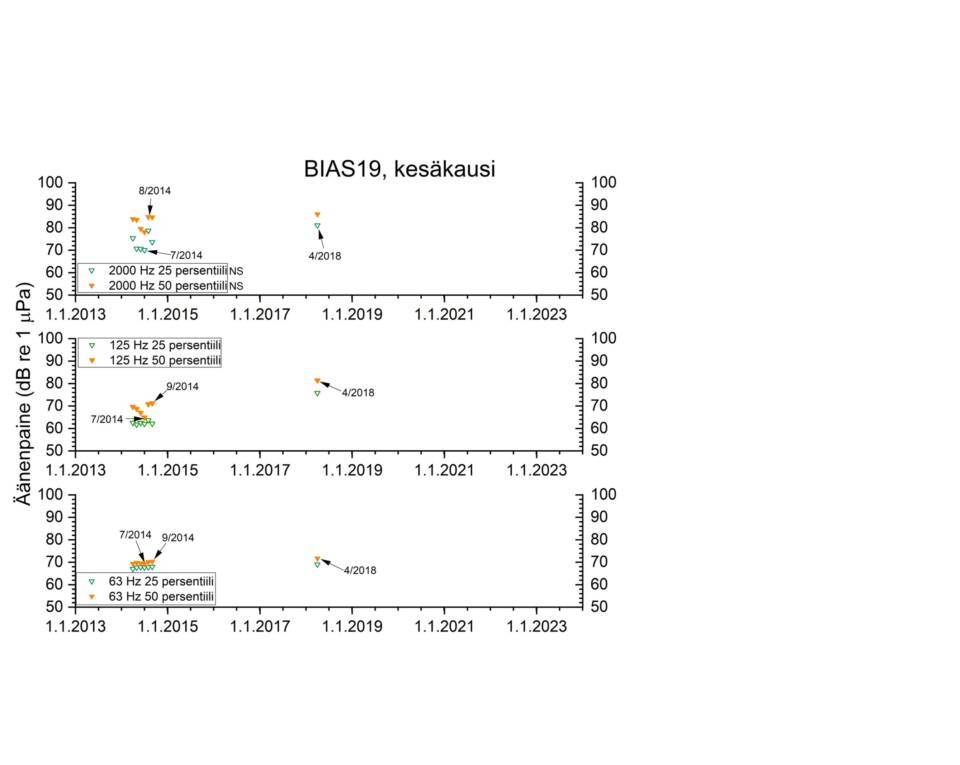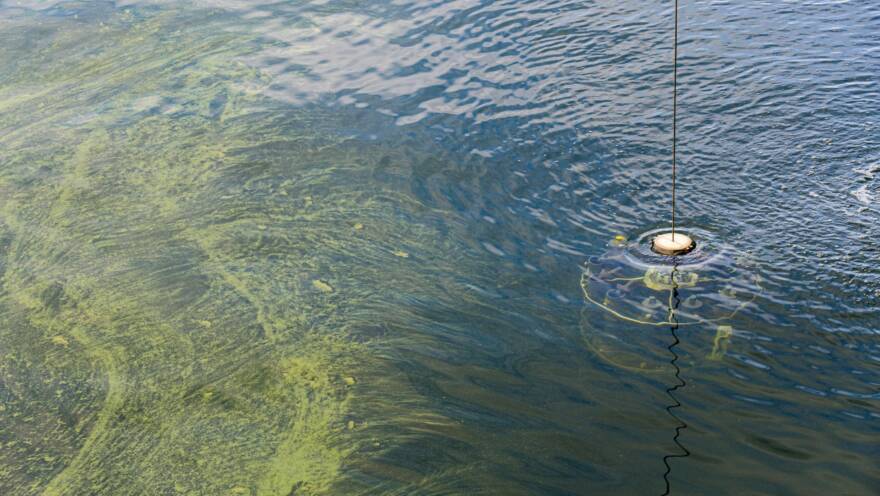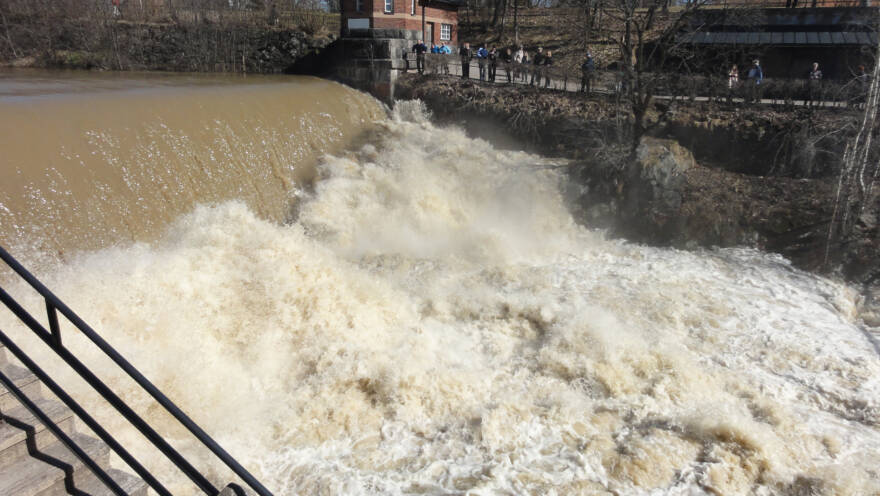Measurements of underwater noise have been conducted in various research projects since 2014, but official monitoring has only started in recent years. The first review of changes in underwater noise was conducted in 2022 and updated in 2023.
Classification of the noise
When studying underwater noise, attention is paid not only to the intensity of the noise but also to its area of impact and duration
- Continuous noise mainly originates from shipping and offshore wind turbines, and it is most intense at low frequencies (63 and 125 Hz).
- Intermittent noise mainly comes from underwater construction activities, such as dredging, blasting, excavation, and piling.
Underwater noise has increased
The entire Baltic Sea is in good condition regarding intermittent noise. However, in terms of continuous noise, the Gulf of Finland and the northern parts of the Baltic Sea’s main basin are in poor condition. In these areas, more than one-fifth of the human-caused continuous noise was over 20dB higher than the natural soundscape.
There have also been noticeable changes in continuous underwater noise in Finland’s open sea areas between 2014 and 2023.
Bay of Bothnia
In the Bay of Bothnia, the intensity of noise has not changed statistically significantly between 2014 and 2023.
Northern part of the Baltic Sea’s main basin
The amount of low-frequency noise in the Baltic Sea’s main basin has increased. The observed increase in noise of approximately 10–15 dB at the lowest frequency range of 63 Hz is likely due to increased shipping traffic. A small effect may be due to the introduction of a hydrophone producing stronger low-frequency background noise in 2021.
At the frequency range of 125 Hz, the amount of noise has remained at the same level between 2014 and 2023. The reduction in noise of approximately 10–15 dB at the frequency range of 2000 Hz may be related to the warming of the Baltic Sea.
Gulf of Finland
In the eastern Gulf of Finland, the amount of noise increased by approximately 5–10 dB in the 125 Hz frequency range and by approximately 5–7 dB in the 63 Hz frequency band between 2014 and 2023. There have been no changes in sound pressure at high frequencies.
Monitoring of underwater noise continues
The monitoring of underwater noise is ongoing. Definitions of good status for noise have been established. Shipping traffic is predicted to increase in the future, and based on new measurement results, the impacts of both this and Finland’s marine management action program on the underwater soundscape can be examined. The goal is to achieve a state where underwater noise does not harm the marine environment.
Information on the implementation of measurements
For the review, the lower quartile of sound pressure (25% of observations fall below this value during the measurement period) and the median (50% of observations fall below this value during the measurement period) were calculated from the primary data on a calendar month basis. The observable variation reflects sound intensity as a general ecological pressure factor.
The data were examined for all observation periods and separately for the summer (April-October) and winter (November-March) seasons. The statistical significance of the linear change in these data was calculated using analysis of variance (ANOVA; probability threshold 0.05).
In installations, hydrophones always cause a slight internal noise (self-noise). This disturbance level was about 5 dB lower in the SM2M devices used before 2021 than in the currently used ST500 devices in the 63 Hz frequency band. In the 125 Hz frequency band, the disturbance level of the devices was almost exactly the same. In the 2000 Hz frequency band, the ST500 causes significantly less background noise than the SM2M.
Noise research focuses on projects
The noise monitoring program for 2021–2023 and 2024–2025 is funded by the Ministry of the Environment.
Between 2012 and 2016, data was collected within the framework of the EU Life BIAS project.
The data from 2017-2018 was produced in a project funded by the European Maritime and Fisheries Fund called TILA4, which investigates the impact areas of underwater noise for marine spatial planning needs and reduces harmful effects.
In the EU-funded Biodiversea project, which started in 2022, extensive noise measurement campaigns are conducted in the Archipelago Sea, and the harmfulness of noise to invertebrates and fish is tested.
